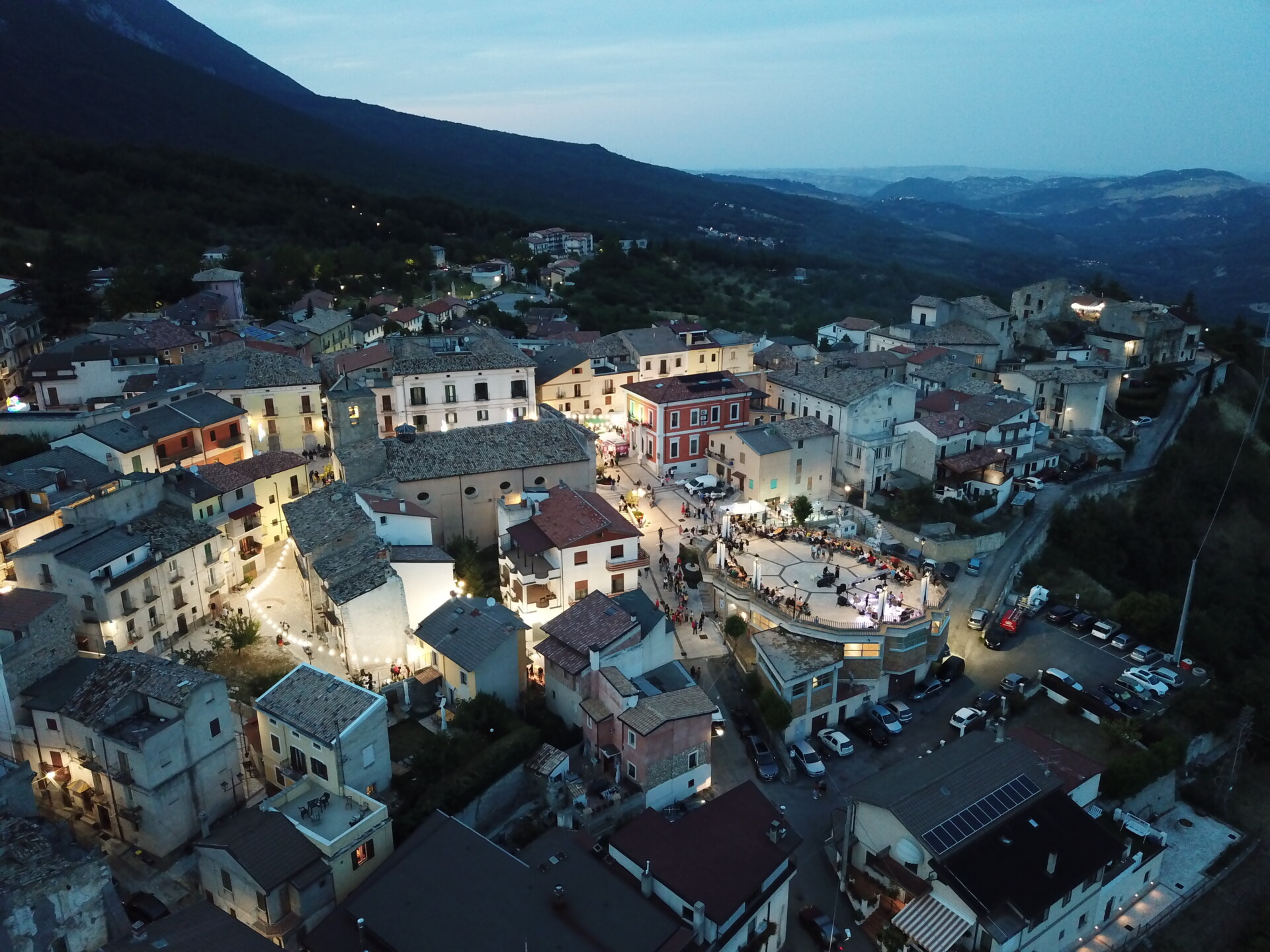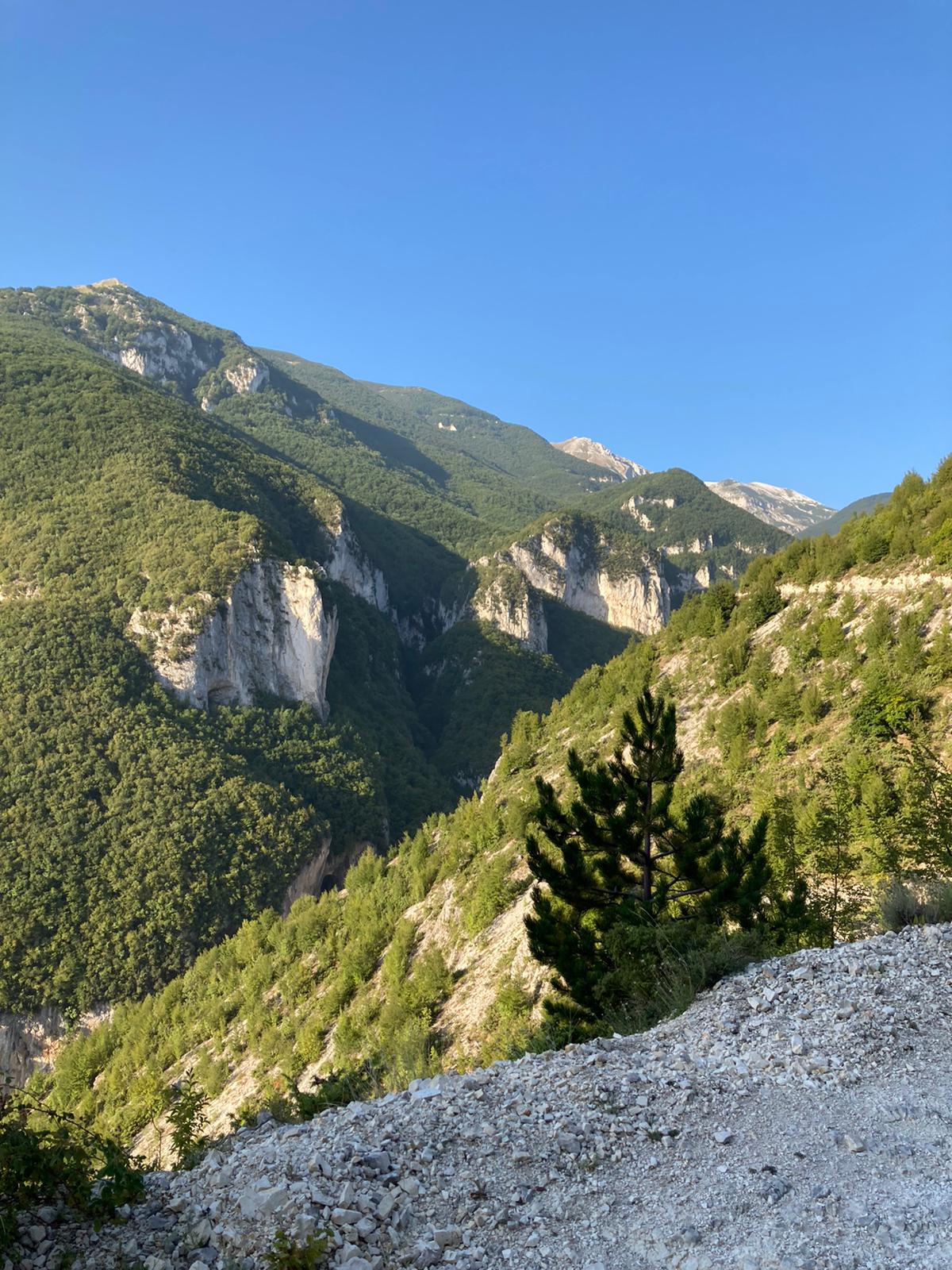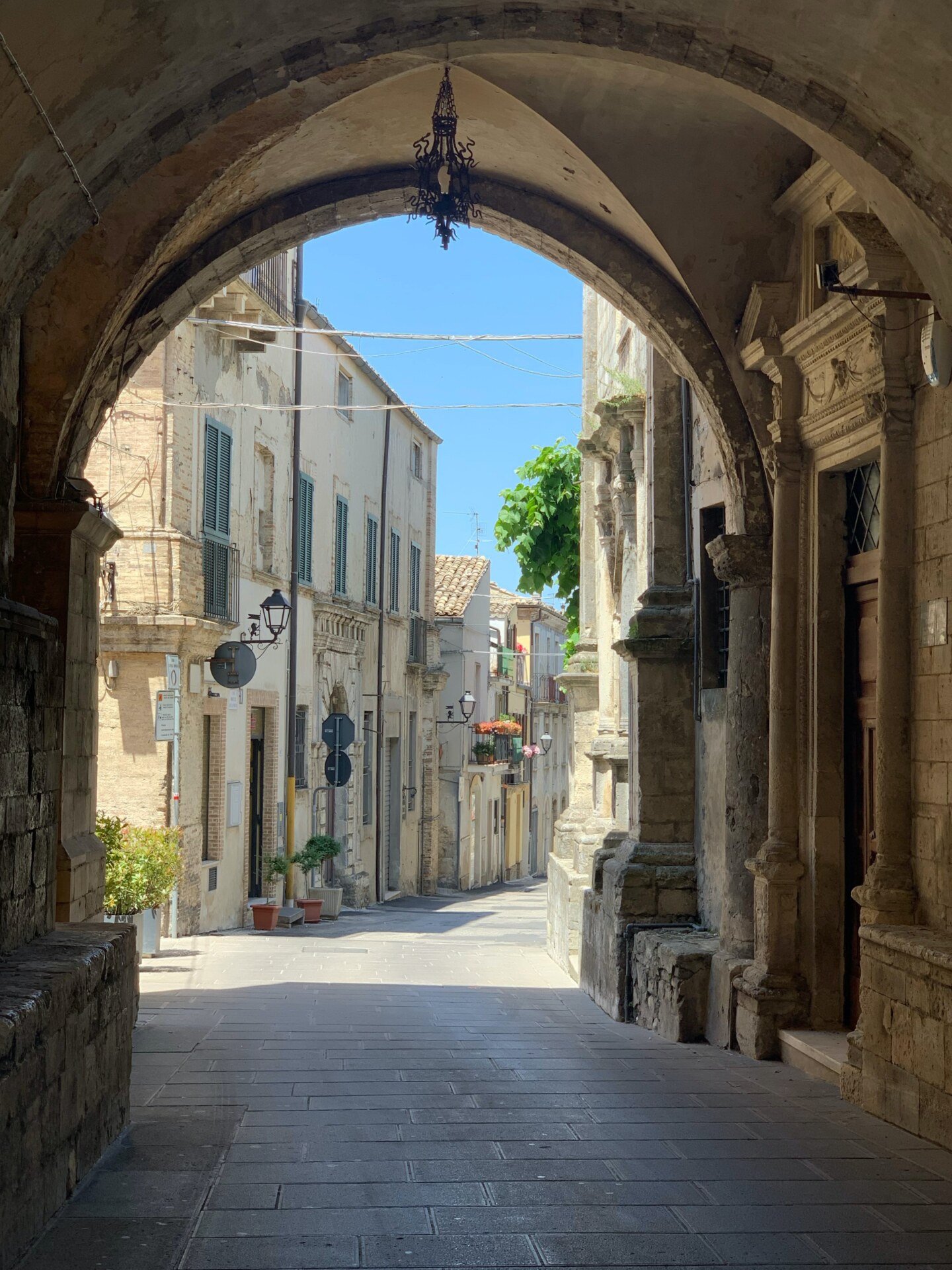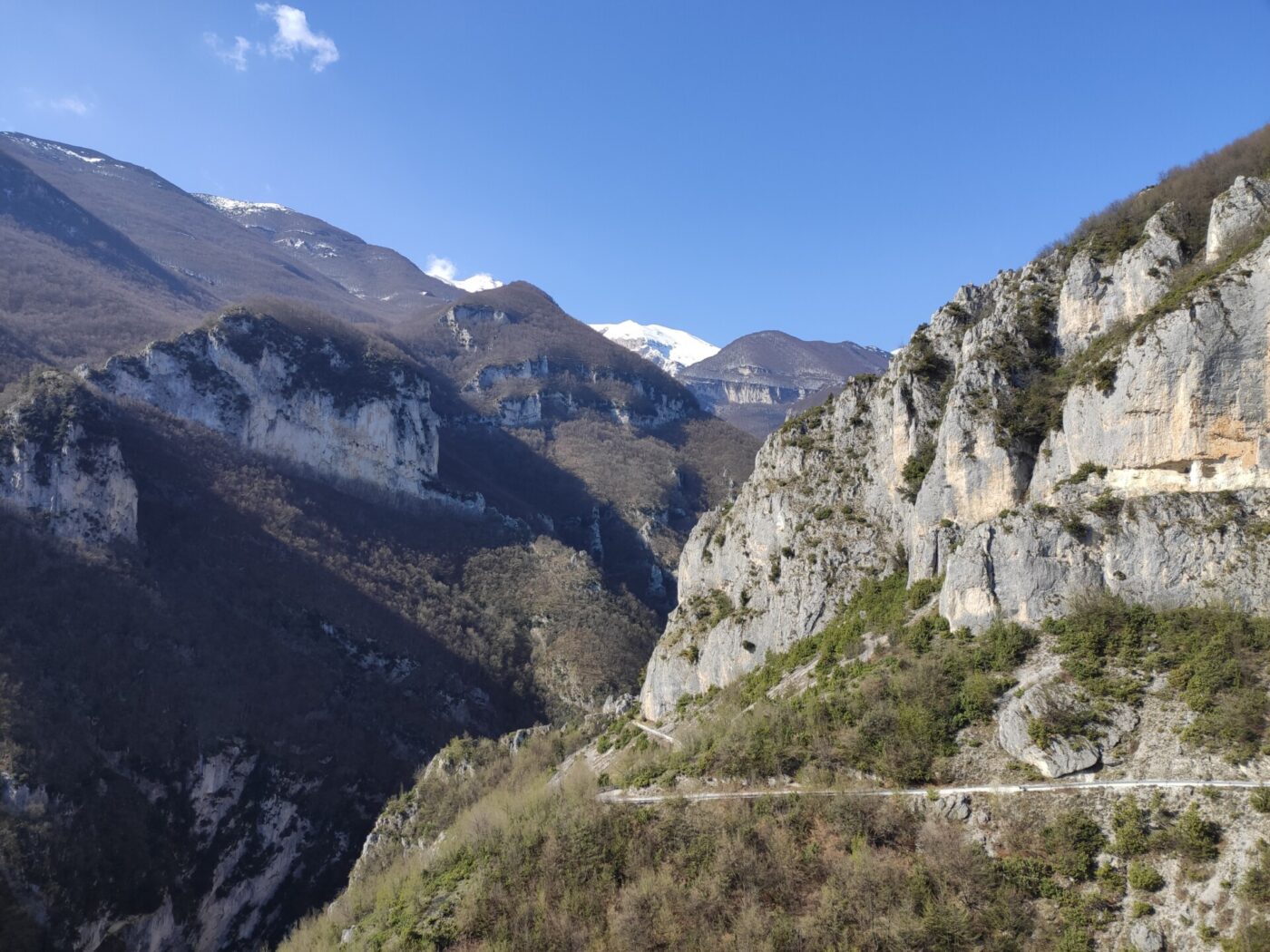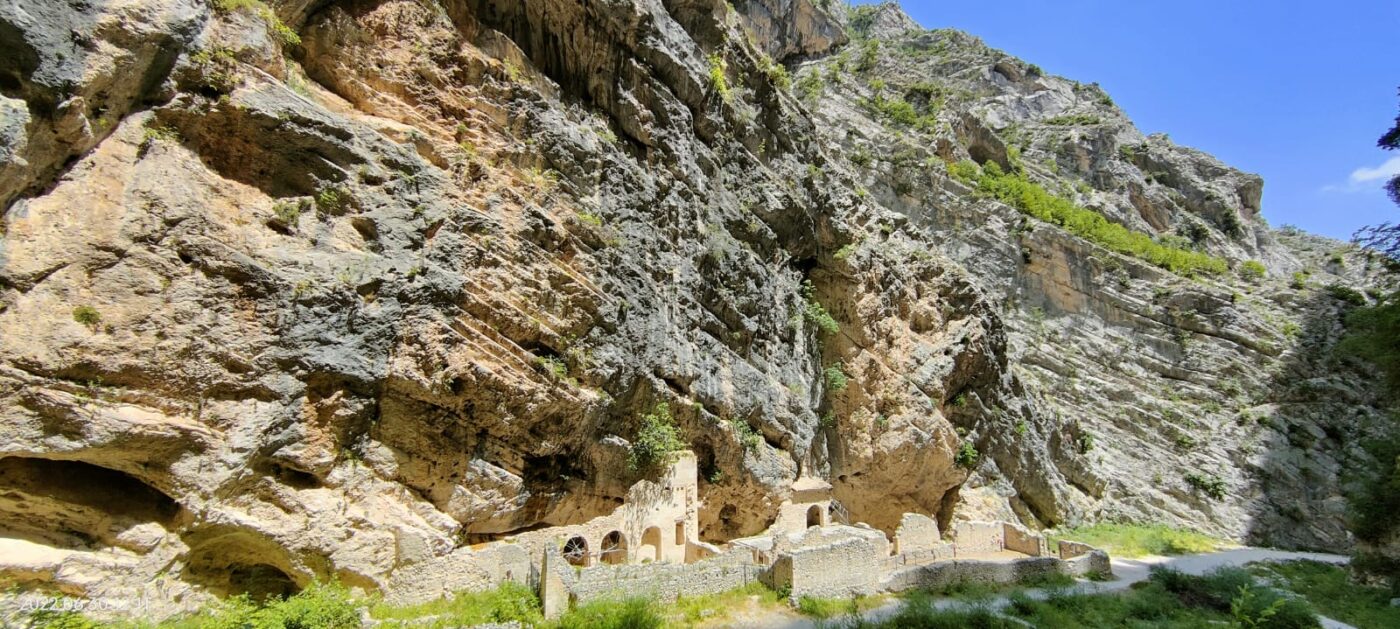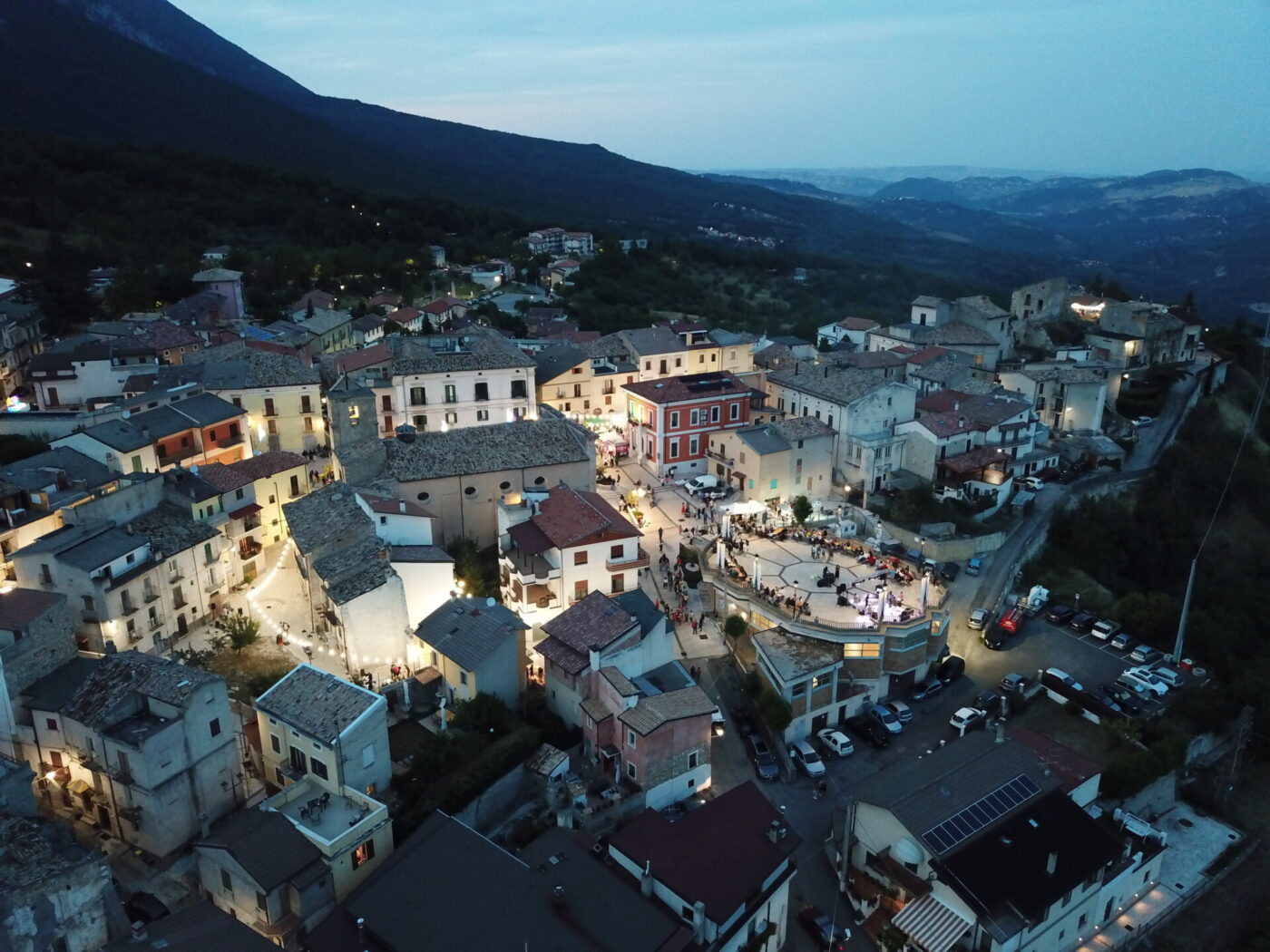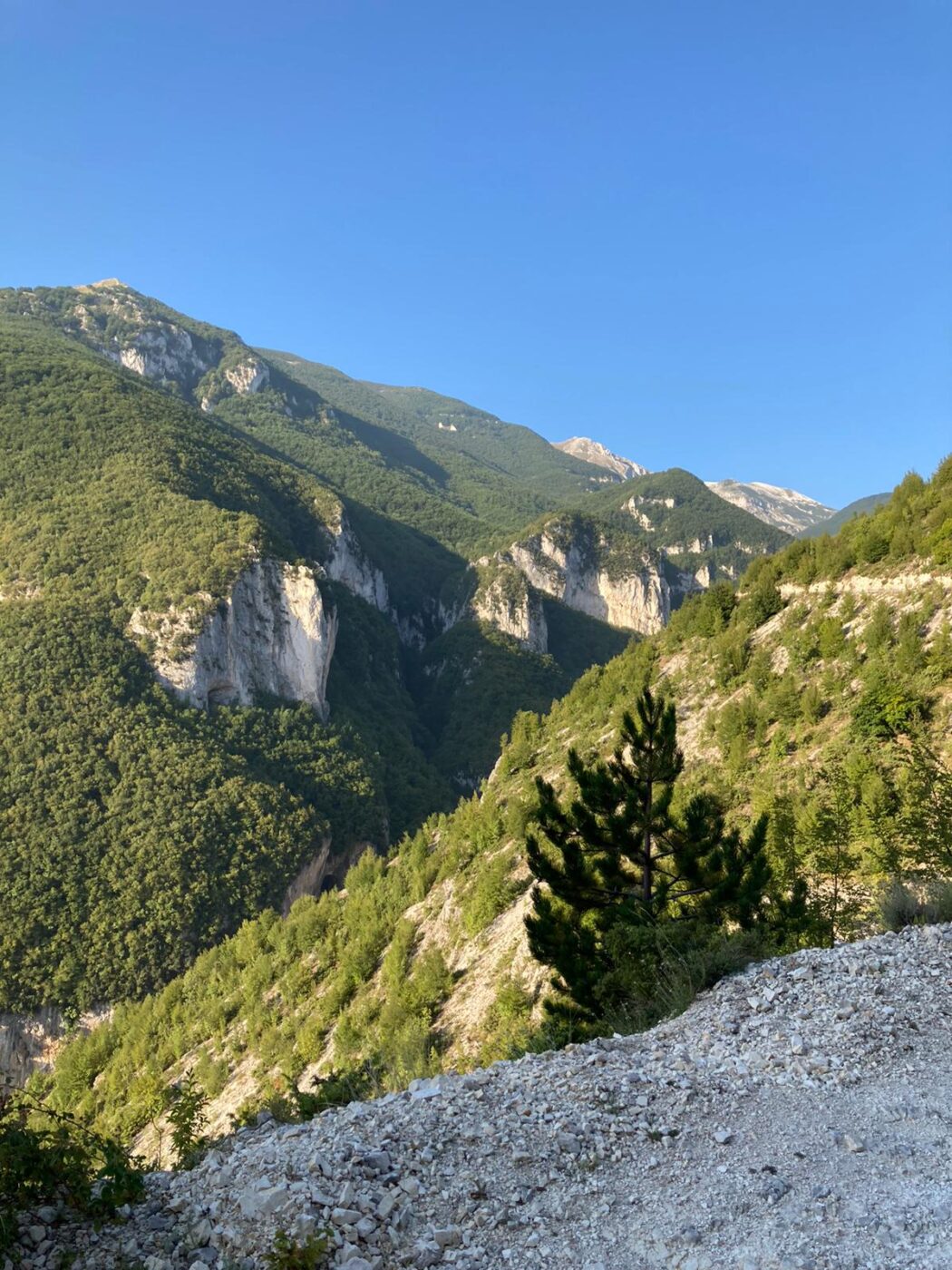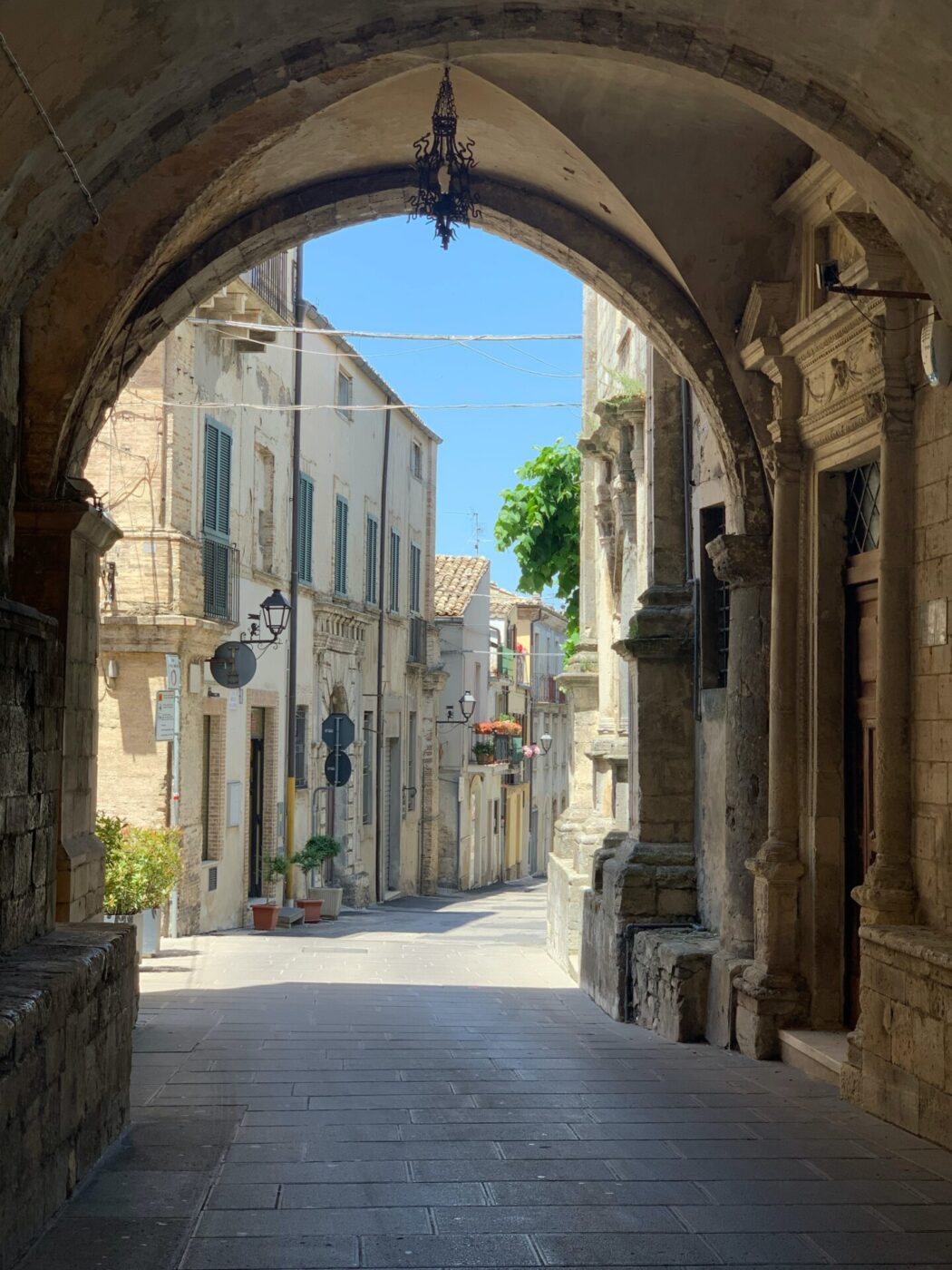This phrase is engraved in the mountainous rock, and the Maiella massif really is, for the people of Abruzzo, a mother: female, mystical, fertile.
The Maiella National Park (one of the 24 Italian parks) gathers around the cluster of Apennine mountains and, since 2021, is a UNESCO Global Geopark. Under its wing there are 74,000 kilometers of breathtaking panorama, 38 municipalities, three provinces, and a spectacular geographic range hosting an extremely rich biodiversity: one third of Italy’s flora species resides here. Maiella includes the second highest peak of the entire Apennine chain: the top of Monte Amaro (2,795 meters)–“Bitter Mountain”, harsh just like the effort to climb it–reveals a barren lunar landscape overlooking the infinite horizon. But the ridges and plateaus of Maiella slowly mellow into hillsides striped with rows of olive groves and vineyards, sloping down towards the blue sea. Even a local like me can’t help but succumb, each time, to amazement.
Maiella’s maternity comes from the peasant legends of Maja, the goddess of growth, especially in nature. Story goes that Maja fled Phrygia with her son, the giant Hermes, after he was seriously injured in the battle, but, en route, they shipwrecked on the coast of Abruzzo. There, she hears of precious medicinal herbs growing spontaneously on the mountaintop and, with her son on her shoulders, she begins to climb. But Hermes passes away before she can reach her destination, and the giant is buried on the Gran Sasso, a mountain whose outline has earned it the nickname the “Sleeping Giant”. As for Maja, the people of Abruzzo gave her eternal residence on the majestic mountain in front of her son’s burial grounds, which bears her name and semblance: the profile of a woman lying down, locally-known as the “Sleeping Beauty”. Legend has it that, during stormy days, the sound of the wind blowing is Mother Maja’s cries for Hermes.
Here, a guide to the towns–their histories, natural beauties, and must-eat foods–of eastern Maiella:
PRETORO
As night descends, Pretoro comes alive with the warm glow of illuminated houses and street lamps, creating a picturesque nativity scene against the dark silhouette of Maiella. Perched atop the mountain, this quaint town is dense with charming houses, winding alleyways, intricately carved stone caves, and a 1,407-step staircase to the main square.
Pretoro is known for being the town of the Apennine Wolf, protected in a special wildlife area. One of its most captivating celebrations is “The Miracle of Saint Dominic and the Wolf” on the first Sunday of May; the procession, dedicated to the saint, features serpari, snake-catchers. Pretoro is also known for its skilled fusari, wood craftsmen who meticulously fashion tools for spinning wool. In winter, at the nearby Passolanciano-Majelletta–one of the most famous ski resorts in Abruzzo–you can barrel down the slopes with sweeping views of the Adriatic Sea.
Don’t miss the torta del lupo (“the wolf cake”): a typical dark chocolate and red wine dessert, soaked in rum and filled with exquisite gianduia chocolate, invented by Mrs. Paola Alimonti in her laboratory Dolcezze del Parco in 2009.

GUARDIAGRELE
In Gabriele D’Annunzio’s novel The Triumph of Death, Guardiagrele emerges as a significant setting, serving as the birthplace of the main character and dominating the narrative throughout the second book. Often referred to as the Terrazza d’Abruzzo for its position between the mountains and the sea, the town is renowned for its historic craftsmanship and vibrant community of skilled goldsmiths, ironworkers, ceramicists, woodworkers, and copper craftsmen.
The center gravitates around the Collegiate Church of Santa Maria Maggiore, flanked by two arcades that preserve historical frescoes–notably that of San Cristoforo–and topped by a complex of nine bells that ring joyfully every Sunday. Head towards the sea to the east to reach Villa Comunale, the public park where you can enjoy a panorama that reaches the Tremiti islands.
In Guardiagrele, tourists queue up to buy the famous sise delle monache (“nun breasts”), also called tre monti (three mounts), a typical local dessert of sponge cake, custard, and powdered sugar that you can try at Emo Lullo, a bakery that has been making them since 1889. For haute cuisine lovers, head to the starred Villa Maiella.
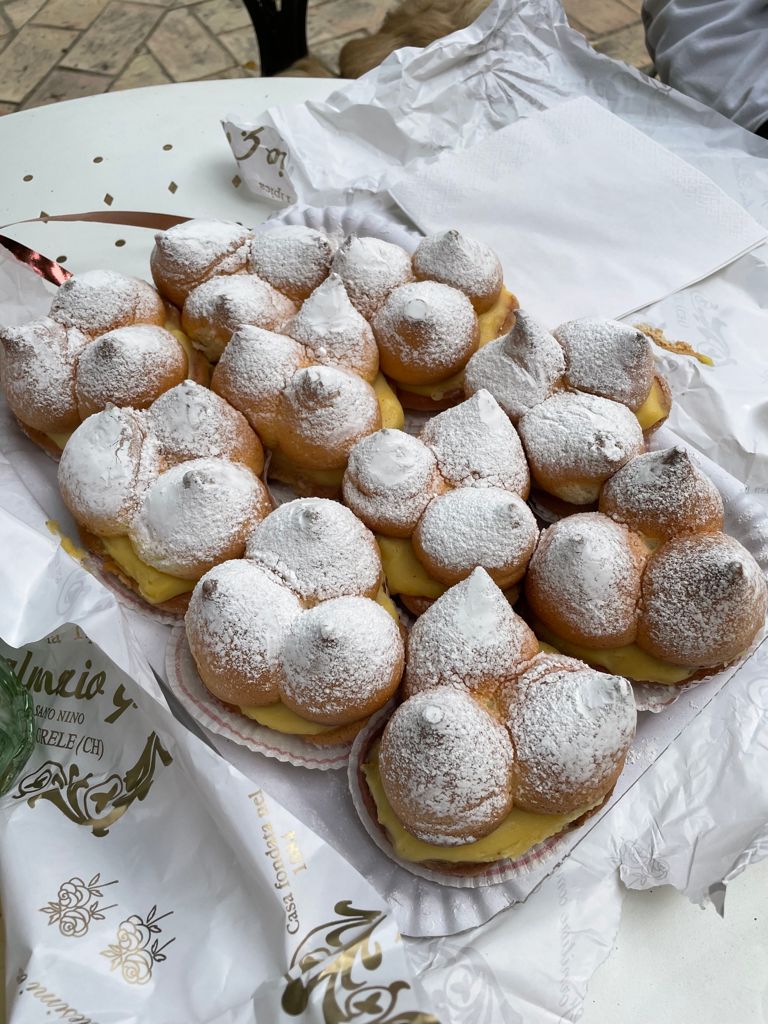
PENNAPIEDIMONTE
Pennapiedimonte, literally “the Pen at the foot of the Mount”, is carved in the white stone of the Eastern Maiella. On a steep rocky ridge overlooking the valley of the river Avello, Pennapiedimonte’s historic center is dotted with stone houses, ancient oil mills, cellars, stables, and warehouses dug into the rock. Historical traces of the scalpellini, master stonemasons, are apparent in the cornices, capitals, portals, and stone sculptures on the town’s facades.
From the Belvedere Balzolo you can admire the magnificence of the Avello Valley, its deep canyons, and pastoral caves; here, bring a picnic lunch with local salsicciotto di Pennapiedimonte (pork sausage) and strozzacavalli (sweet and salty taralli). Overlooking the belvedere is the rock spur resembling a praying woman: legend says she is the Dea Maja tending to her son. The Balzolo is the starting point of several hiking trails–once used by shepherds with their flocks during transhumance–to the highest peaks of the Maiella.
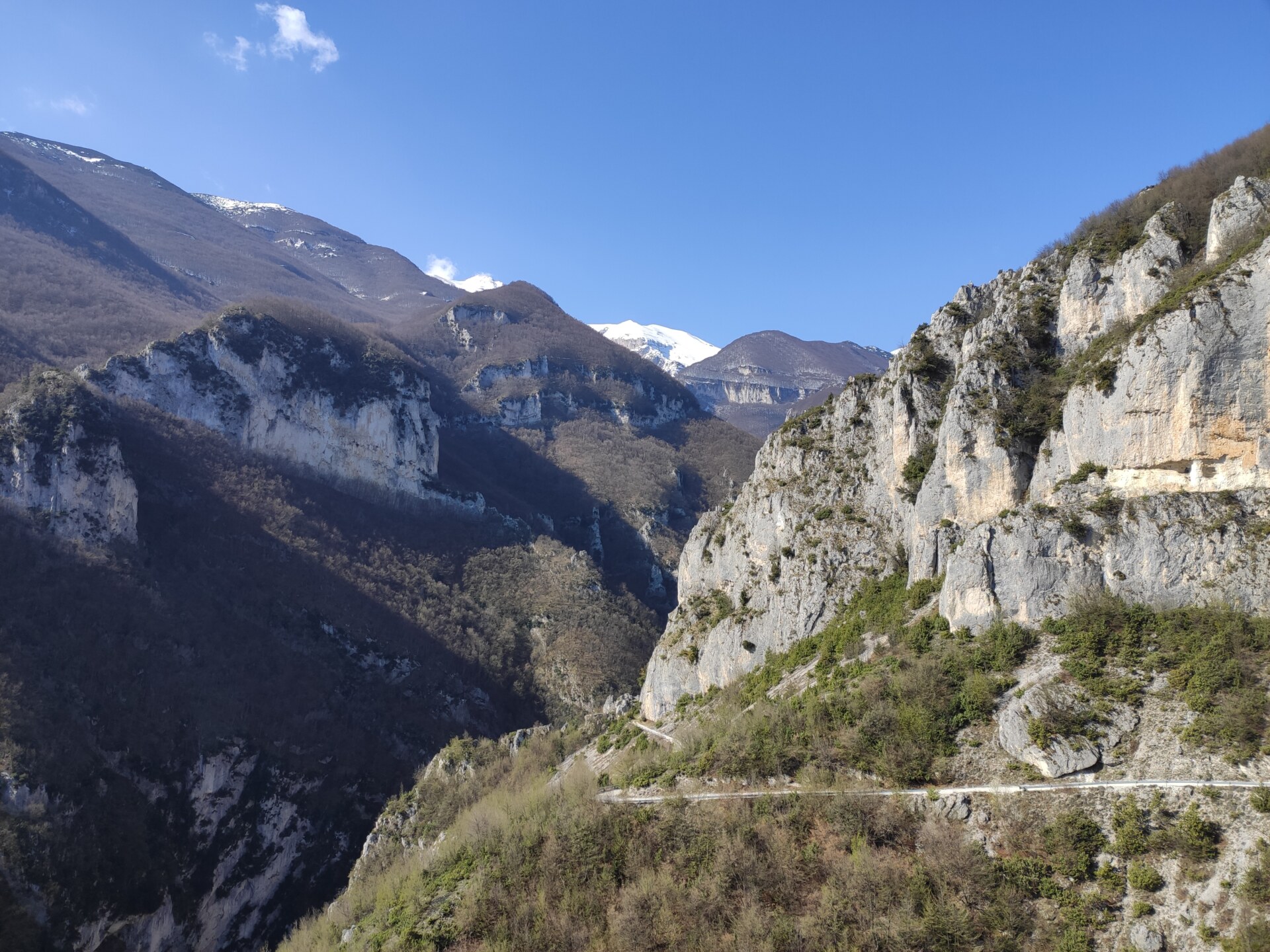
CIVITELLA MESSER RAIMONDO
Here, the mountainous terrain transforms into undulating hills, sculpted by the Verde and Aventino rivers and bordered by the serene Lake Sant’Angelo. The ancient town, perched on the hillside, evokes its medieval roots: the intertwining alleys and the main street converge at the pinnacle where the grand Palazzo Baglioni proudly stands. For a captivating journey through the village’s history, follow the Percorso Civitas—a trail that leads you to notable landmarks and signs that narrate their stories.
Foods not to be missed? The torta di mandorle (“Civitellese almond cake”) and campanelle civitellesi, spicy pork sausages called “little bells” because, as they hung in the peasants’ kitchens to age, they oscillated like bells with the wind. When it’s particularly cold outside, grab a glass of mosto cotto (cooked must) and a dish of sgattone, a pasta cooked in wine broth.
I hope you are lucky enough to find villagers playing the game of ruzzola (rolls). Originally, the game used an aged Pecorino, but the ruzzola is now a wooden cylinder wrapped in a string: whoever spins it the furthest wins. It’s always a moment of genuine joy to see the village elders playing after dinner.
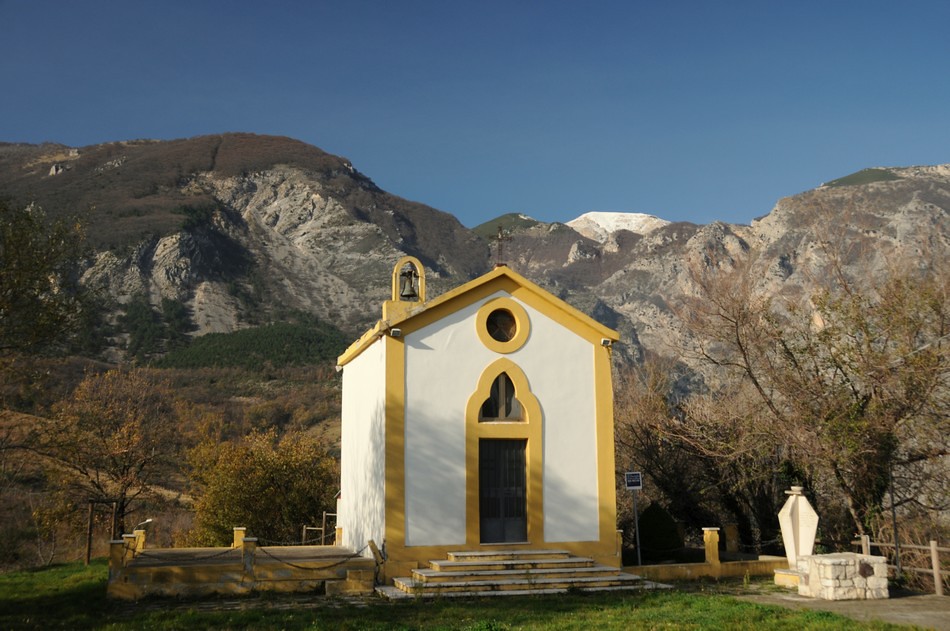
FARA SAN MARTINO
This medieval village is framed by the Santo Spirito and Serviera Valleys and is crossed by the “Verde” river. The crystal clear waters of the river gave the impetus to famous pasta factories–such as De Cecco, Delverde, and Giuseppe Cocco–that have made Fara San Martino the world capital of pasta. The force of the water, channeled into steep waterfalls, has also kept in motion the many gualchiere, sheep wool mills, that emerged along its course. A must visit is the Gualchiera Orsatti, which dates back to the 19th century and now houses the Museum of Traditions.
Here, deep rocky gorges open along the walls of the Maiella like sinuous white canyons, which gradually reveal a precious archaeological jewel: the Abbey of San Martino in Valle, carved into the rock, dates back to the year 832.
Accessible through the Porta del Sole, Terra Vecchia is the oldest part of the village, characterized by its narrow ramps and steep stairs that lead to the ancient quarter. It was precisely this mesmerizing labyrinth of alleys and stairways that sparked the creative genius of Maurits Cornelis Escher, the Dutch engraver and graphic designer, who immortalized Fara San Martino in his 1928 engraving.
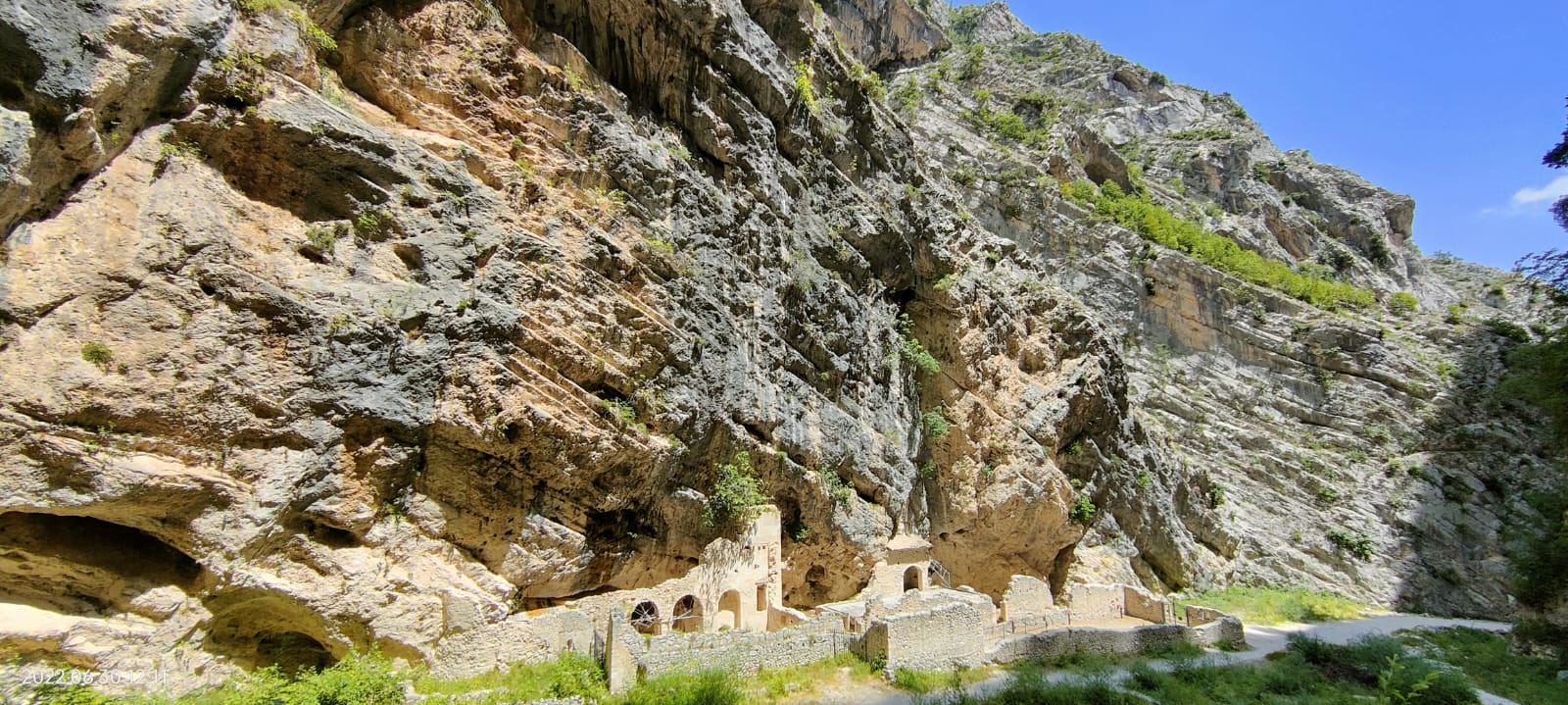
LAMA DEI PELIGNI
Lama dei Peligni is bordered by woods that change their color by season: infinite green during the summer, fiery red during autumn, and glistening white during winter. Check out the town’s Piazza Umberto I, with arcades and a 16th-century bell tower, and, next to it, the Belvedere Francesco Verlengia, named after an illustrious Italian librarian from here.
The town is also home to a wildlife reserve for and a museum dedicated to the Apennine Chamois goat-antelope as well as the Cavallone Caves: the highest natural caves in Europe, reachable by a two-seater basket lift. The formations inspired artist Francesco Michetti’s set design for “La Figlia di Iorio”, the tragedy written by poet and playwright Gabriele D’Annunzio.
While here, you must eat the sfogliatella Lamese inspired by the Neapolitan one. Donna Anna reinterpreted the recipe, a gift from her sister-in-law from Campania, with the raw materials of Abruzzo: grape jam (instead of ricotta), black cherry jam, cooked must, and nuts from woods. The recipe is handed down from mother to daughter, following an all-female lineage. To taste it, head to Pizza e Dolci Da Emilia or I Segreti di Donna Anna.
